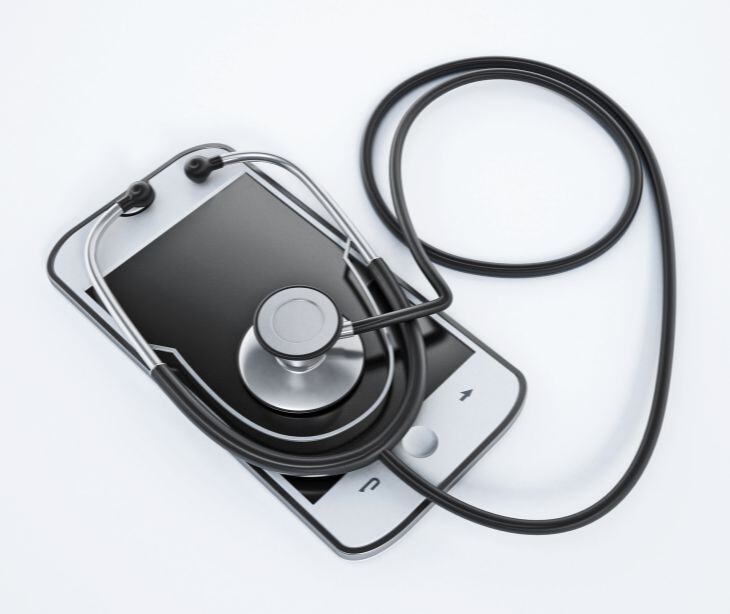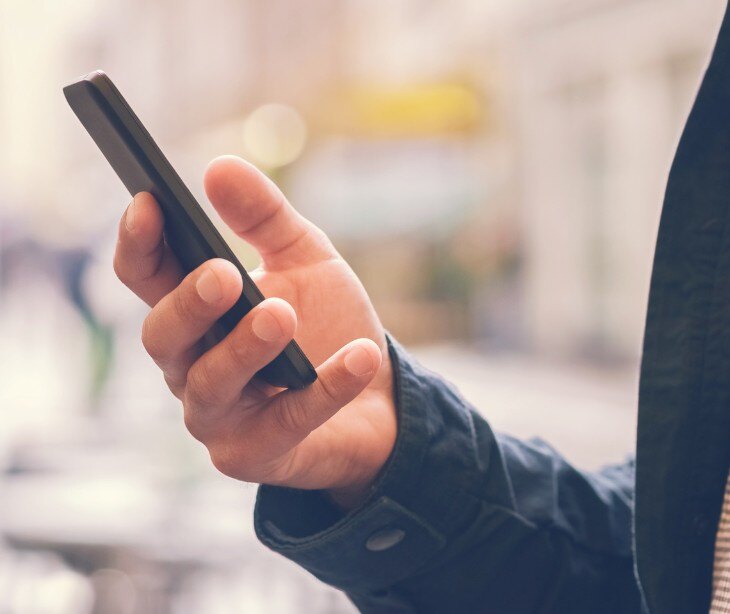
The Health Insurance Portability and Accountability Act (HIPAA) is legislation in the healthcare industry that ensures the privacy and security of patients' sensitive health information. As healthcare providers and organizations strive to comply with HIPAA regulations, many questions arise about specific practices, such as texting.
What is HIPAA compliant texting?
HIPAA compliant texting refers to the secure transmission of text messages containing protected health information (PHI) that adheres to HIPAA regulations. This involves ensuring that the communication is encrypted, access-controlled and that the messages are only accessible to authorized individuals. Additionally, the texting platform must implement audit controls and secure data storage.
Read more: What is HIPAA compliant texting?
Why is encryption important for HIPAA compliant texting?
Encryption is necessary because it converts PHI into a coded format that is unreadable to unauthorized individuals. When text messages containing PHI are encrypted, it ensures that even if the data is intercepted during transmission, it cannot be deciphered without the appropriate decryption key.
What are the features of a HIPAA compliant texting solution?
Encryption: Ensures that messages are encrypted from the sender’s device to the recipient’s device.
Access controls: Includes secure login methods such as unique user IDs and multi-factor authentication to ensure only authorized users can access the messaging platform.
Audit logs: Maintains logs of all messaging activities, including message sending, receiving, and reading, to track access and modifications to PHI.
Remote wipe capability: Allows administrators to remotely delete data from a lost or stolen device to prevent unauthorized access to PHI.
Secure data storage: Ensures that messages are securely stored on both the sender’s and recipient’s devices and on any servers involved in the communication.
Related: Texting tools and HIPAA compliance: The ultimate guide
Can standard SMS be used for HIPAA compliant texting?
No, standard SMS does not meet HIPAA requirements because it lacks encryption and secure access controls. Standard SMS messages can be easily intercepted, and they do not provide a secure method for transmitting PHI. Organizations should use a secure messaging platform that complies with HIPAA regulations.
What is a business associate agreement (BAA) and why is it necessary for HIPAA compliant texting?
A business associate agreement (BAA) is a contract between a HIPAA-covered entity and a business associate that handles PHI on its behalf. The BAA outlines the business associate’s responsibilities to protect PHI and comply with HIPAA regulations. For HIPAA compliant texting, a BAA is necessary with the messaging service provider to ensure they implement appropriate safeguards to protect PHI.
How should healthcare organizations handle patient consent for HIPAA compliant texting?
Healthcare organizations should:
- Inform patients: Clearly explain the risks and benefits of using text messages to communicate PHI.
- Obtain written consent: Secure written consent from patients acknowledging they understand the risks and agree to receive PHI via text messages.
- Provide alternatives: Offer patients alternative secure communication methods if they prefer not to use text messaging.
- Document consent: Keep detailed records of the consent provided by the patient, including the date and scope of the consent.
Read also: How to document consent for text messaging and email communication
How often should HIPAA compliant texting policies be reviewed and updated?
HIPAA compliant texting policies should be reviewed and updated at least annually or whenever there are major changes in technology, regulations, or organizational practices. Regular reviews help ensure that the policies remain effective and compliant with current HIPAA requirements.
What training should be provided to staff regarding HIPAA compliant texting?
Training should include:
- HIPAA overview: Basics of HIPAA regulations and the importance of protecting PHI.
- Secure texting practices: How to use the secure texting platform, including encryption, access controls, and remote wipe capabilities.
- Incident response: Procedures for reporting and responding to breaches or unauthorized access.
- Patient consent: Guidelines for obtaining and documenting patient consent for texting.
- Regular updates: Ongoing education on updates to policies, procedures, and new technologies related to HIPAA compliant texting.
Read more: How to train healthcare staff on HIPAA compliance
What are the penalties for non-compliance with HIPAA texting regulations?
Noncompliance penalties can range from $100 to $50,000 per violation, with an annual maximum of $1.5 million for identical provisions violated. Factors influencing the penalty include the nature and extent of the violation, the harm caused, and the entity's compliance history. Penalties can be categorized into four tiers:
- Tier 1: Lack of knowledge – $100 to $50,000 per violation.
- Tier 2: Reasonable cause – $1,000 to $50,000 per violation.
- Tier 3: Willful neglect (corrected) – $10,000 to $50,000 per violation.
- Tier 4: Willful neglect (not corrected) – $50,000 per violation.
How can remote wipe capabilities enhance HIPAA compliance in texting?
Remote wipe capabilities allow administrators to remotely delete data from a lost or stolen device, preventing unauthorized access to PHI. This feature benefits HIPAA compliance as it helps safeguard PHI from breaches if a device is compromised. It ensures that PHI remains secure even if the physical device is no longer in the organization's control.
What should be included in a HIPAA compliant texting policy?
A HIPAA compliant texting policy should include:
- Scope and purpose: Define the purpose of the policy and its applicability.
- Roles and responsibilities: Outline the responsibilities of staff and administrators in maintaining compliance.
- Approved platforms: List approved secure texting platforms.
- Encryption requirements: Specify encryption standards for transmitting and storing PHI.
- Access controls: Define procedures for secure access, including password policies and multi-factor authentication.
- Patient consent: Detail the process for obtaining and documenting patient consent.
- Incident response: Provide a plan for responding to breaches or unauthorized access.
- Training and awareness: Outline training requirements for staff.
- Policy review: Include procedures for regular review and updating of the policy.
See more: How to develop HIPAA compliance policies and procedures
Can personal devices be used for HIPAA compliant texting?
Yes, personal devices can be used for HIPAA compliant texting if they are properly secured and managed. Requirements include:
- Encryption: Ensure all text messages and data on the device are encrypted.
- Secure apps: Use only approved, secure messaging apps that comply with HIPAA.
- Access controls: Implement strong passwords and multi-factor authentication.
- Remote wipe: Enable remote wipe capabilities to delete data if the device is lost or stolen.
- Policies: Adhere to organizational policies regarding the use of personal devices for work purposes.
How can audit controls be implemented in HIPAA compliant texting?
Audit controls can be implemented by:
- Logging activities: Ensure that the texting platform logs all messaging activities, including sending, receiving, and reading messages.
- Regular reviews: Conduct regular reviews of audit logs to monitor access and usage patterns.
- Access alerts: Set up alerts for unusual or unauthorized access attempts.
- Reporting: Generate and review reports on messaging activities to detect and address potential compliance issues.
- Integration: Integrate audit logs with the organization’s overall security monitoring system for detailed oversight.
How can healthcare organizations evaluate the effectiveness of their HIPAA compliant texting solutions?
Healthcare organizations can evaluate effectiveness by:
- Compliance audits: Conduct regular compliance audits to ensure the texting solution meets HIPAA requirements.
- User feedback: Gather feedback from users on the usability and reliability of the texting platform.
- Incident analysis: Review incidents involving texting to identify and address any weaknesses in the system.
- Performance metrics: Track performance metrics such as message delivery times, system uptime, and security incidents.
- Continuous improvement: Implement a continuous improvement process to update and enhance the texting solution based on audit findings and user feedback.
How can multi-factor authentication (MFA) enhance the security of HIPAA compliant texting?
MFA enhances security by requiring two or more verification methods before granting access. This reduces the risk of unauthorized access as it is unlikely an attacker can compromise multiple authentication factors. For HIPAA compliant texting, MFA ensures that even if a password is stolen, the attacker would still need a second form of authentication, such as a physical token or a biometric factor, to access the PHI.
What are the common challenges in implementing HIPAA compliant texting, and how can they be addressed?
Common challenges include:
- User adoption: Ensuring staff adoption of the new secure texting platform. Address this by providing training and demonstrating the platform’s benefits.
- Device management: Managing the variety of devices used by staff. Implement a robust BYOD (Bring Your Own Device) policy and ensure all devices meet security requirements.
- Compliance monitoring: Continuously monitoring compliance with HIPAA regulations. Use automated tools for auditing and monitoring, and conduct regular compliance reviews.
- Patient engagement: Obtaining patient consent and educating them on secure texting practices. Provide clear information and support to help patients understand and consent to the use of secure texting.
Are there any limitations to be aware of when using HIPAA compliant text messaging?
While HIPAA compliant text messaging offers many benefits, healthcare organizations should be aware of limitations such as potential technical glitches, the need for staff training and education, and the importance of ongoing monitoring and maintenance to ensure continued compliance and security.
Can patients request copies of text messages containing their health information?
Patients have the right to request copies of their health information, including text messages containing their medical records or communications with healthcare providers. Healthcare organizations should have procedures in place for fulfilling patient requests for access to their health information in compliance with HIPAA regulations.
How can Paubox assist in providing HIPAA compliant texting?
Paubox Texting is a HIPAA compliant API designed for patient engagement, allowing seamless delivery of personalized text messages directly to recipients' mobile devices without the need for third-party apps or passcode-protected portals. Using Paubox's established email encryption standards, this innovative solution ensures the security of PHI while enabling modern patient communication. With support for both iPhone and Android, personalized reminders, test results, and follow-ups can be sent effortlessly, backed by top-rated U.S. support and clear documentation.
In the news
The Children's Medical Center of Dallas faced a $3.2 million fine due to a series of HIPAA violations. The breach occurred when a stolen Blackberry device, lacking password protection or encryption, resulted in the exposure of 3,800 electronic protected health information (ePHI) records.
The acting Director of the Office for Civil Rights (OCR) at the time stated the necessity of implementing security measures to safeguard health information, including proactive risk assessments and the immediate resolution of any identified vulnerabilities. This case serves as a reminder that healthcare organizations must prioritize the protection of sensitive data, even on portable devices used for daily operations.
Subscribe to Paubox Weekly
Every Friday we'll bring you the most important news from Paubox. Our aim is to make you smarter, faster.




